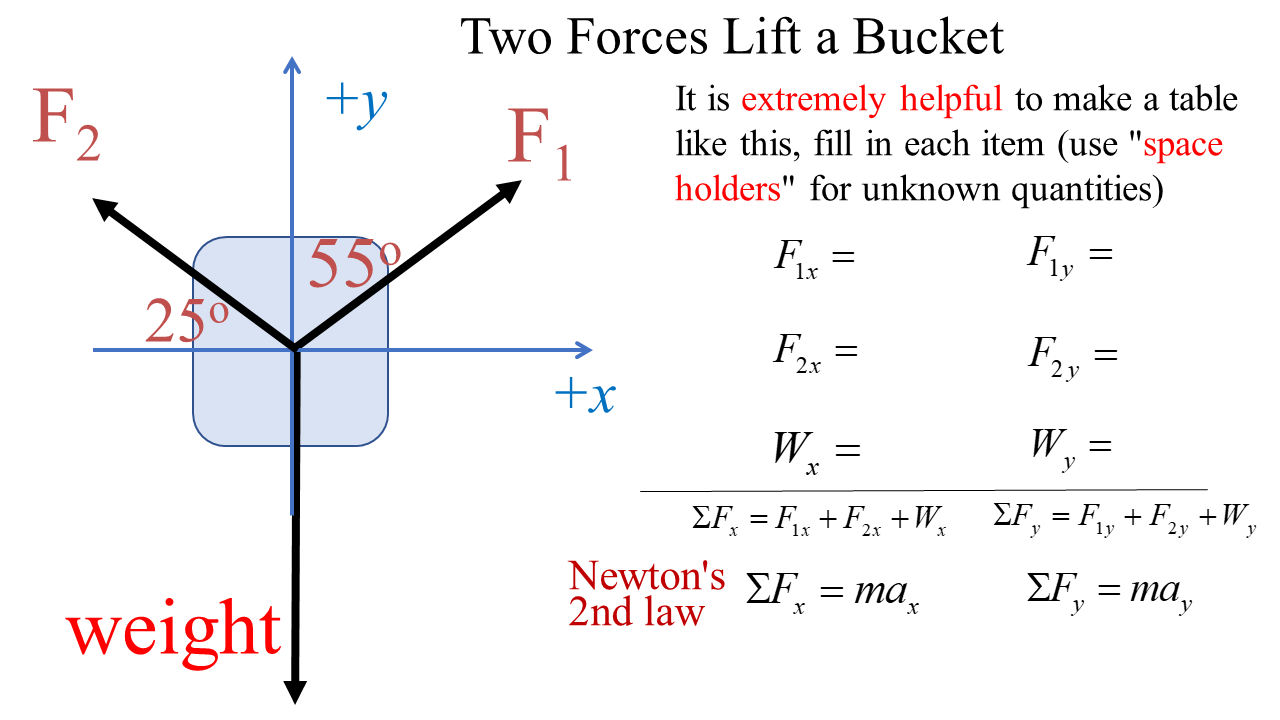(Solved): Two forces, F 1 and F 2 lift a bucket whose mass is m = 5.1 kg vertically upward. The magnitud ...
Two forces, F⃗ 1 and F⃗ 2 lift a bucket whose mass is m = 5.1 kg vertically upward. The magnitude of the gravitational acceleration is 9.80 m/s2 . The magnitude of F1 is unknown. The magnitude of F2 = 83.0 N .
Part C - Force F⃗ 2 is completely given. Calculate its x- and y- components. Pay attention to what angle to use, which trignometrical functions to use, and the signs of the components.
Part D - Remember: weight is a force, which is a vector. Calculate its x- and y- components. Pay attention to what angle to use, which trignometrical functions to use, and the signs of the components.
Now the table on the right side of the figure is complete with F1 as a space holder. You can write up ΣFxΣ and ΣFy with F1 as a space holder.
You will apply Newton's Laws (1st or 2nd).
Part E - The physical situation is that the bucket moves vertically upward (along the y axis). You can find the magnitude of F1. If you don't know how, open the "hints".
Part F - Now you can apply Newton's 2nd Law in the y- axis to the find the bucket's acceleration ay.
Keep 3 digits after the decimal point. Unit is m/s2
Expert Answer
Now net force on the bucket in the x - direction -
